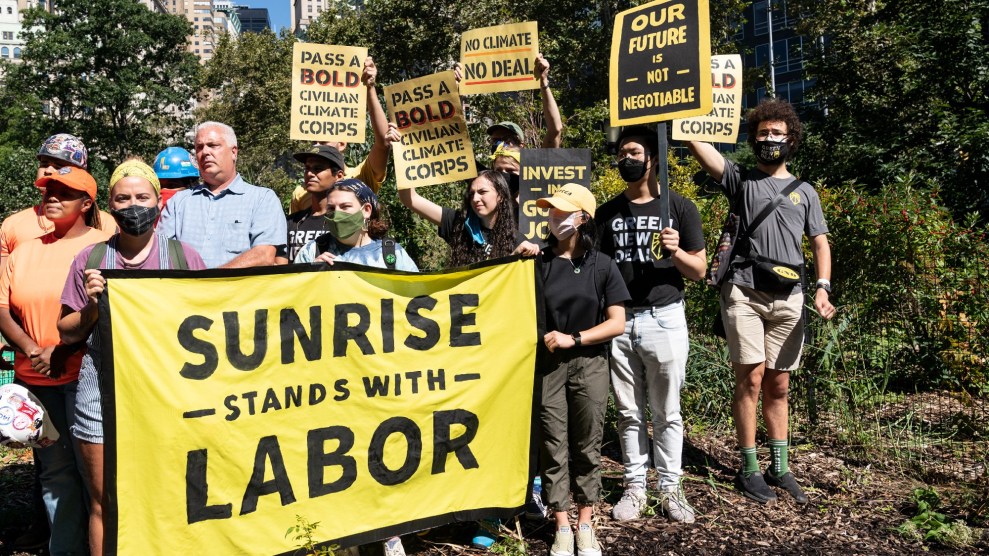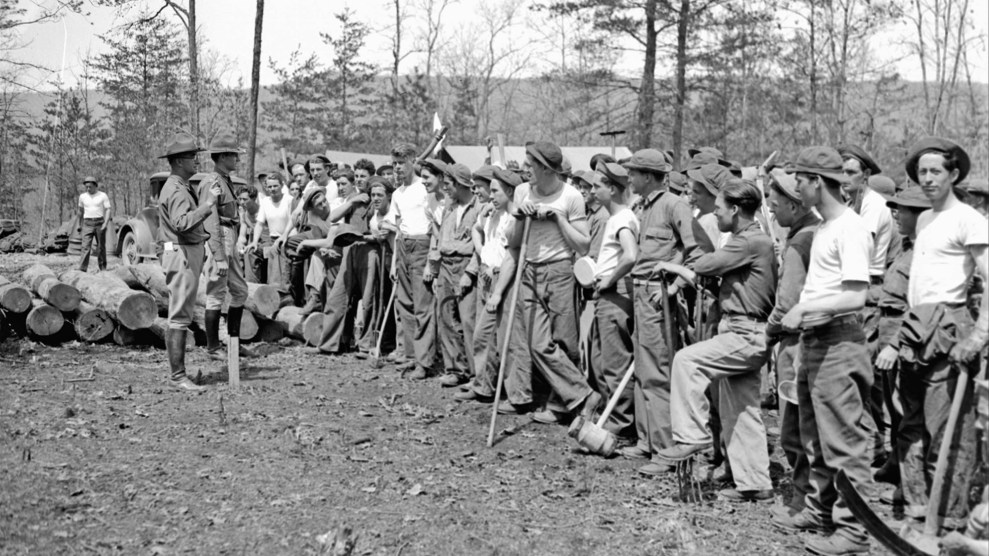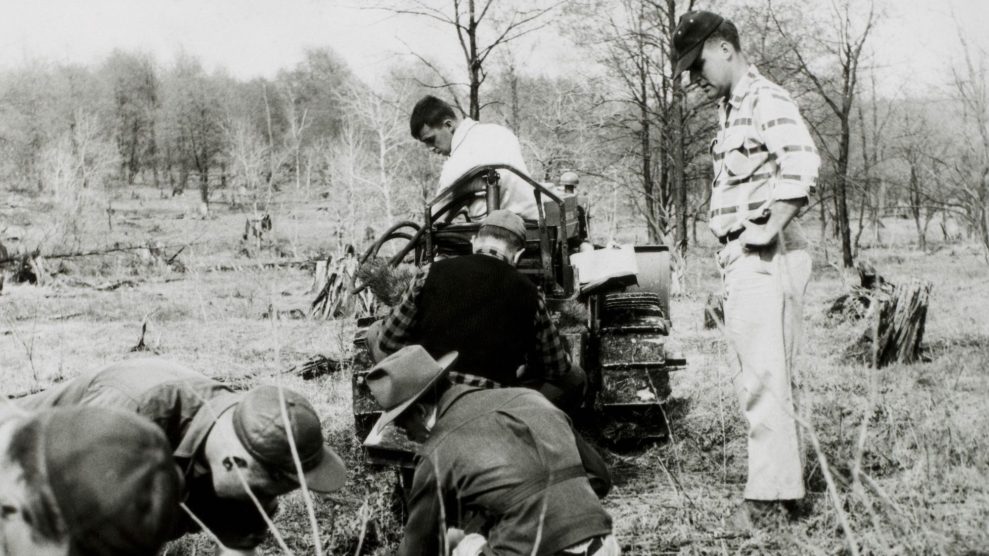
Lev Radin/AP
On Wednesday, the Biden administration launched the American Climate Corps, a climate-focused youth job training program. The plan will put some 20,000 people to work doing clean energy, wildfire prevention, and coastal resilience jobs and has already cost $150 million in investment. It’s far from the original vision, which Biden announced in 2021 and which would have invested $30 billion for more than 300,000 workers. Despite this, activists, including those in New York City for the Climate Week protests, are celebrating.
It is no secret that the American Climate Corps is meant to mirror Franklin Roosevelt’s New Deal–era Civilian Conservation Corps, best known for leaving the world with more trees, national parks, and photos of shirtless men doing labor. In fact, the original (much more progressive) ACC legislation was also the progeny of New Deal parents Alexandria Ocasio-Cortez (D-N.Y.) and Ed Markey (D-Mass.). Biden has emphasized how different the program is to its predecessor: Gone are the days of $1 daily wages, segregated camps, and a no-women-allowed ethos. The new program has promised a “living wage” (although the only crew that has been explicitly guaranteed $15 per hour is the Forest Corps) and a “focus on equity and environmental justice.”
But the American Climate Corps really has a whole lot in common with the CCC. Roosevelt’s corps is most famously remembered as part and parcel of the president’s efforts to restart the economy after the Great Depression, but it was also a response to what was arguably white America’s first climate disaster: the Dust Bowl. While the Dust Bowl was not caused by the climate change we experience now, it was manmade, the result of decades of poor land management and exasperated by other climatic shifts such as drought and sea surface temperatures. In a letter to state governors, Roosevelt wrote, “The nation that destroys its soil destroys itself.” It was no doubt on Roosevelt’s mind as he built a program meant to rebuild the workforce.
That’s not so far off from Biden’s proposal, which also aims to prepare both the workforce and the environment for the ramifications of our mismanagement of natural resources. A lot of the work itself will also be very similar. Where the CCC restored prairies to combat the effects of dust storms, the ACC plans to restore damaged coastal wetlands to protect communities from storm surges and flooding. Wildfire management was a priority for Roosevelt, just as it is for Biden. Both corps prioritize job training. In the ’30s, the CCC hosted educational seminars for workers on ecological science. Today, the ACC plans to be a “pathway into good-paying union jobs,” providing “classroom instruction and on-the-job training for the purpose of obtaining an industry-related certification to install energy efficient building technologies.”
The environmental impacts of the CCC were a mixed bag, as they used very new and not always sound ecological techniques. For example, the workers in the CCC planted 3 billion trees, creating a massive carbon sink that likely lessened our growing emissions; at the same time, those trees were all of one species, making the forests more vulnerable to disease and disaster. The CCC led to an influx of resources for and interest in the budding fields of ecology and land management, which continue to be vital to our climate fight. In his book Nature’s New Deal, historian Neil M. Maher demonstrates how the Civilian Conservation Corps jumpstarted the country’s nascent environmental movements. The idea of “landscape”—a realm of human and nature interaction, rather than separation—”grew organically from the New Deal era,” Maher says, “a period that perhaps more than any other in U.S. history witnessed the transformation of public spaces by the federal government.” It propelled the nation into a new phase of environmental consciousness and activism. On the other hand, Roosevelt is also the president we can thank for the steady supply of oil from Saudi Arabia, though of course, he didn’t know what we do now about greenhouse gasses.
Biden doesn’t have that excuse. He recently gained criticism for approving a huge oil project in Alaska. So while some activists celebrate our generation’s corps, others dismay. “A Climate Corps that focuses solely on promoting renewables doesn’t do the job,” said activist Keanu Arpels-Josiah, one of the core organizers of the record-breaking March to End Fossil Fuels in New York City. “The executive actions we desperately need are those that will directly and swiftly phase out fossil fuel expansion and production.”













